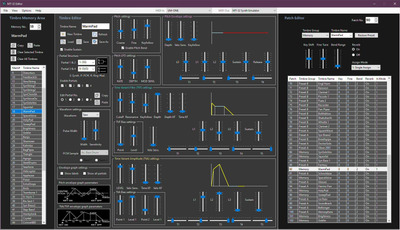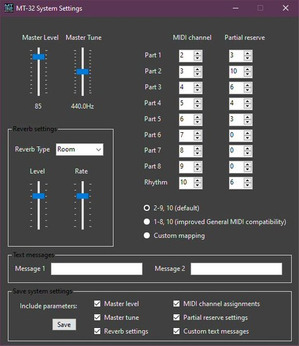First post, by sfryers
- Rank
- Newbie
(Not sure whether MIDI Emulation\MT-32 General or Heart of Gold\Release Announcements is the best place for this, so apologies to mods if I've picked the wrong one...)
Hello everyone- long-time listener, first-time caller.
After getting my hands on a hardware MT-32 for the first time last year, I've found myself both fascinated by the potential of the synthesiser and frustrated by the clunkiness of the available editing tools, which (unsurprisingly given the age of the device) seem to mostly date from the early 1990s.
At the beginning of this year, I finally bit the bullet and started work on making my own timbre editor and patch librarian in Visual Studio. Whilst it's still a little rough around the edges in places, I think it's now working well enough to release it into the wild:
The application should work on any Windows 7, 8, 10 or 11 system with the .NET 6.0 runtime installed. I've tested it with both my hardware MT-32 (rev.1.07) and Munt (connected through the MME driver, mt32emu_win32drv). EDIT- I've successfully tested it on Ubuntu with the latest versions of Wine and wine-mono.msi, and also included a build targetting .NET4.7.2 for systems which don't support .NET6.0.
I've licenced the software as GPL3- full source code is available at https://github.com/sfryers/MT32Editor/releases/v0.9.9b.
Enjoy, and please let me have any feedback - this is my first attempt at coding anything in C#!
MT-32 Editor- a timbre editor and patch librarian for Roland MT-32 compatible devices: https://github.com/sfryers/MT32Editor

